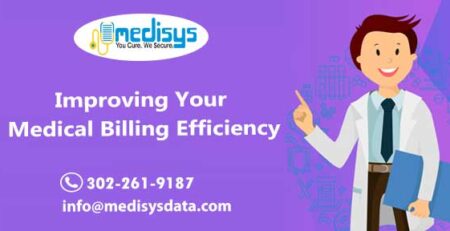The rising cost of healthcare in the United States is moderately due to its dependence on paper products. According to estimates the healthcare industry spends around $300 billion per year on paper, providing a strong incentive for eliminating this expense. But, if you talk about paperless medical billing process, then one must know that the benefits it provides is greater patient satisfaction, higher retention rates and increased payment rates, especially with online payments. Along with that it also reduces collection costs, which customarily requires a particularly large amount of paper.
To go paperless presents a challenge for many healthcare units, regardless of their size or type. Physicians must make fundamental changes to their workflow, invest in new technology and retrain employees. Plus, these changes are especially dramatic for billing and coding personnel’s that manage clients with complex billing requirements.
Here’s what happens when you go paperless with your medical billing requirements.
Going paperless presents real time access to patient data
The advantage of Electronic Health Records (EHR) over paper records are undisputable. With EHR, physicians can instantly access patient data anytime and anywhere they need to. They can look at lab results and digital x-rays right away and connect results to patients promptly. Physicians can also recommend medications electronically.
EHR also makes partnership with other healthcare professionals easier and more streamlined. When you keep digital records on every aspect of your patient’s care, it certifies that everyone involved has the access they need at their fingertips.
Secured option
Think for an instant what would happen to your facility if a natural disaster were to take place. If you are presently using paper charts, chances are hurricane, tornado, floods, or fire would destroy your paper records and reduce your facility impracticable. What would happen if you lost all of your documents?
Patient data protected by the proper software management is much more secure than paper files. Consult and partner with experienced Medisys Data Solutions for best practices and recommendations.
Financial Stability
Although moving from paperless to digital can cost more up front, in the long run it will save you money. Firstly, you will no longer have the expenditure of office supplies and equipment such as patient charts, paper, and labels, etc. You can renovate storage that used to house paper files into usable patient space. Your second area of savings will be in labor charges related to paper charts: creating, pulling, filing, and finding lost charts all consume a huge amount of workforce time.
Superior Productivity
As we said earlier, retrieving patient data will be much easier and faster when you are operating digitally. Going paperless will also save you the extra time it might have taken to record information or decipher what was written down by a physician. Instead of having to translate the paper work and input it into a computer system, physicians and staff in the office are able to use computers during appointments to capture all the information needed, thus saving steps and increasing overall efficiency.
Satisfied Patients
Today, the regular patient uses technology on a daily basis for all kinds of things. So much of our lives is now handled by mobile apps, email, and texts. We pay our bills through banking apps, manage our food by ordering online, and keep in contact with our doctors electronically.
Patients appreciate the handiness and safety offered by paperless practices. Going paperless in your medical billing and coding will save your patients time, and will allow them to connect with you more easily.












